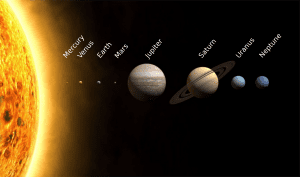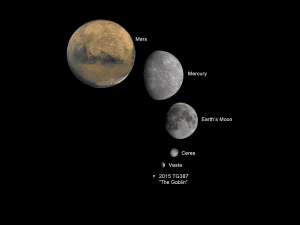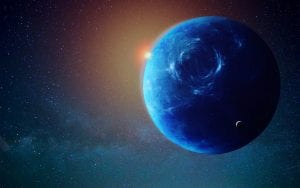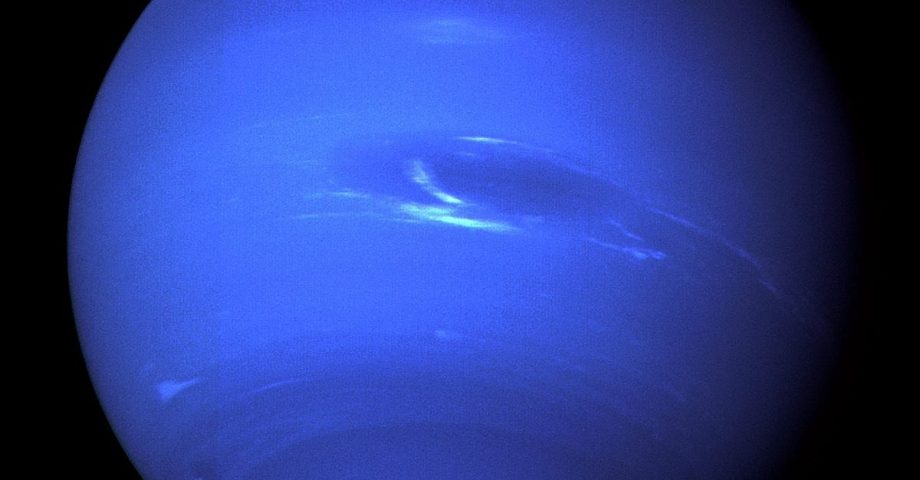15 Important Facts About Neptune, The Ice Giant
Neptune has always been in the shadow of its more famous sibling planets, but it’s a fascinating celestial body that deserves its own fame. Get acquainted with this dark, icy planet — explore these 15 fun facts about Neptune and expand your planetary horizon.
Fast Facts about Planet Neptune
1. Neptune is the farthest planet from Earth
When Pluto lost its classification as a planet in 2006, Neptune became the farthest planet from the Earth and the sun. The distance between Earth and Neptune changes constantly, but the closest Neptune gets to us is 4.3 billion km.
2. It’s the smallest ice giant
The solar system has two ice giants: Uranus and Neptune. They’re classified as such because they’re made of ice, unlike rocky planets like Earth and Mars and gas giants like Jupiter and Saturn. In fact, ice giants like Neptune have cool icy materials floating on small cores. With a radius of 24,622 km, Neptune is the smaller of the two.
3. It’s the coldest planet
The average surface temperature on Neptune is -201°C (-331°F), making it the coldest planet in the solar system.

4. Neptune is the windiest planet, too
Neptune is the solar system’s windiest planet, with wind speeds of up to 2000 km/h (1,200 mph). This is leagues more powerful than Earth’s; our strongest winds reach only 400 km/h (250 mph). These winds are made of clouds of frozen methane that swirl across the planet’s surface.
5. Neptune has a great dark spot
Jupiter is famous for its Great Spot, but it’s a little-known fact that Neptune has one, too. Neptune’s Great Dark Spot has puzzled astronomers. It was first captured by NASA’s Voyager 2 in August 1989 — a dark blue spot about the size of the Earth. However, it disappeared by 1991.
6. It doesn’t have a solid surface
Unlike rocky planets, Neptune’s surface is a mixture of gas and fluid. Its atmosphere comprises hydrogen, helium and methane, as well as water and ice that float over a solid core. Neptune’s core has about the same mass as Earth.
7. Neptune completes a revolution in 164.79 years
It takes Neptune 60,190 Earth days or 164.79 Earth years to complete an orbit around the sun. Another fun fact is that Neptune has an axial tilt of 28°, which is about the same tilt as the Earth. Like our home, Neptune experiences four different seasons, but since one Neptune year is 164.79 Earth years, each of Neptune’s seasons lasts for over 40 years.
Neptune and its sibling planets
8. Pluto was once closer to the Sun than Neptune
From 1979 to 1999, Pluto was near perihelion, the period in its orbit when it was closest to the sun. Because Pluto had an oval-shaped orbit, it was closer to the sun than Neptune. In fact, this fascinating phenomenon happens every 248 Earth years.
9. Neptune spins faster than Earth
Although Neptune’s seasons and years are longer, its days are shorter than Earth’s. It spins faster than Earth, so one day on Neptune takes only 16 hours.

10. Neptune’s gravity pulls stronger than Earth’s
Neptune’s surface gravity is 11.15 m/s2, stronger than the Earth’s 9.8 m/s2.
11. NASA got close to Neptune in 1989
On 25 August 1989, NASA’s Voyager 2 made a close flyby of Neptune, becoming the first spacecraft to get close to the ice giant. During its journey, it took several close-up photos of the planet and discovered four rings and six moons. Since then, no other spacecraft has visited Neptune.
Facts about Neptune’s rings and moons
12. Neptune has give rings
It’s a little-known fact that Neptune (along with planets Jupiter and Uranus) have ring systems, too. Saturn has the most prominent rings, which is why only Saturn’s rings are depicted in many illustrations of the solar system. However, Neptune has at least five main rings, each named after astronomers, who made major discoveries about the planet. From the innermost ring moving outward, Neptune’s rings are named Galle, Leverrier, Lassell, Arago and Adams.
13. Neptune’s rings have weird arcs
Unlike the ring systems of its sibling planets, Neptune’s rings have strange clumps of dust called arcs. Neptune’s outermost ring, Adams, has four arcs named Liberté, Egalité, Fraternité and Courage.
This ring behavior is peculiar because the laws of motion would have scattered the dust evenly throughout the ring. Astronomers theorise that the gravity of Galatea, a moon, stabilises the arcs.

14. Neptune has 14 moons
Neptune has 14 moons, named after lesser sea deities in Greek mythology (since Neptune was the Roman sea god).
• Despina
• Galatea
• Halimede
• Hippocamp
• Laomedeia
• Larissa
• Naiad
• Nereid
• Neso
• Proteus
• Psamathe
• Sao
• Thalassa
• Triton
15. Triton is Neptune’s largest moon
Astronomers came across Triton on 10 October 1846, just 17 days after Neptune was discovered. Triton is the only large moon in the solar system that orbits in the opposite direction of its planet’s rotation. This led scientists to believe that Triton is an independent celestial object in the Kuiper Belt pulled in by Neptune’s gravity.
FAQs about Neptune
What is Neptune’s atmosphere made of?
You would need a special kind of spacesuit in order to visit Neptune! Its atmosphere is made of hydrogen, small amounts of helium and methane.
Why is Neptune blue?
Neptune’s signature blue color comes from the methane in the atmosphere that absorbs the red light from the Sun while simultaneously reflecting the blue light back, giving us the impression that the planet is mostly blue.
Who was the first person on Earth to discover Neptune?
There are multiple people that are credited with the discovery of Neptune, however, the oldest recorded observation of the planet was by Galileo Galilei in 1613. Others include Jérôme Lalande and John Herschel. However, it was only in 1846, thanks to Urbain Le Verrier, that Johann Gottfried Galle was able to see Neptune for the first time through a telescope.
Do you know any interesting facts about Neptune? Share them in the comments below!
If you want to go further into space, check out these facts about captivating comets.
This page was last modified on April 12, 2024. Suggest an edit









